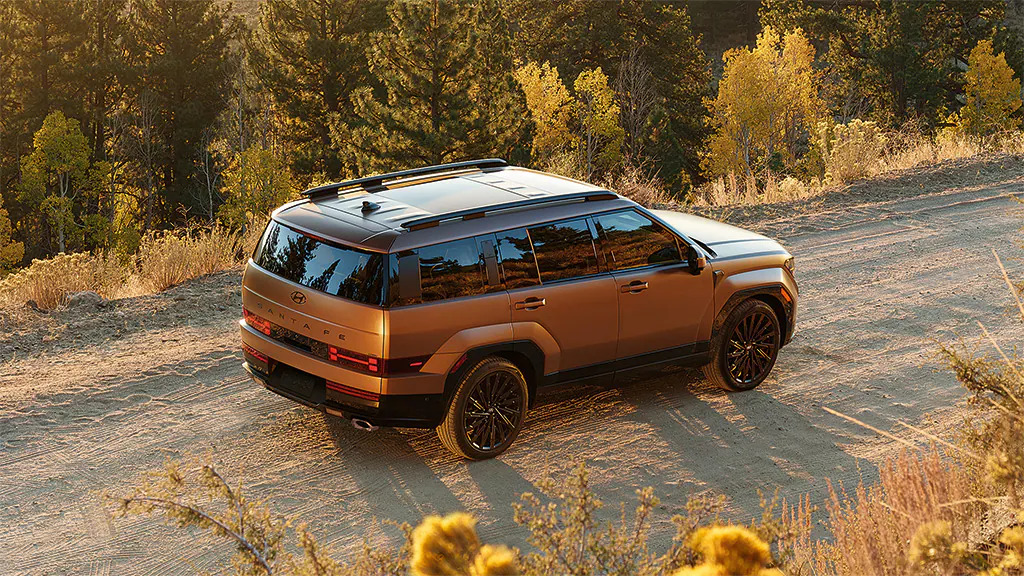
Power Evolution: Hyundai Santa Fe Engines Across Generations

Meta: The Hyundai Santa Fe has evolved with powerful engines over the years. See how its performance has changed. Find the perfect model for you
Since its introduction in 2000, the Hyundai Santa Fe has been a cornerstone of the Canadian SUV market. Over the past two decades, this versatile vehicle has undergone significant transformations, particularly in its powertrain offerings. This article explores the evolution of Hyundai Santa Fe engines across generations, focusing on Canadian models and their journey from V6 dominance to hybrid innovation.
First Generation (2000-2006): The V6 Era Begins
When the Santa Fe first graced Canadian roads in October 2000, it marked the Hyundai entry into the SUV segment. The first generation offered a choice of engines to cater to different driving needs:
2.4L Inline-4: The base engine producing around 149 horsepower.
2.7L V6: The more popular choice, generating 173 horsepower and 178 lb-ft of torque.
The V6 engine quickly became a favourite among Canadian drivers. It offered a balance of power and efficiency that suited the diverse Canadian landscape. This engine was paired with a 4-speed automatic transmission, providing smooth operation for city and highway driving.
Second Generation (2006-2012): V6 Power Amplified
The second generation, launched in 2006, saw a significant upgrade in its engine offerings:
2.7L V6: An updated version of the previous generation’s engine, now producing 185 horsepower.
3.3L V6: A new addition, delivering a robust 242 horsepower and 226 lb-ft of torque.
These engines were mated to a 5-speed automatic transmission, improving performance and fuel efficiency. The 3.3L V6, in particular, was a game-changer, providing the Santa Fe with ample power for towing and confident highway passing.
Third Generation (2013-2018): Turbo Innovation and Efficiency
The third generation marked a significant shift in the Hyundai engine strategy for the Santa Fe:
2.4L GDI Inline-4: The base engine, now with gasoline direct injection, producing 190 horsepower.
2.0L Turbo GDI Inline-4: A new turbocharged option, generating an impressive 264 horsepower and 269 lb-ft of torque.
3.3L V6: Reserved for the long-wheelbase Santa Fe XL, delivering 290 horsepower.
This generation introduced the Santa Fe Sport (short-wheelbase) and XL (long-wheelbase) variants to the Canadian market. The 2.0L Turbo engine was a technological leap, offering V6-like power with improved fuel efficiency. All engines have a 6-speed automatic transmission.
Fourth Generation (2019-2023): Hybrid Integration
The fourth generation brought electrification into the mix:
2.4L GDI Inline-4: The standard engine, producing 185 horsepower.
2.0L Turbo GDI Inline-4: An updated version, now with 235 horsepower.
1.6L Turbo GDI Hybrid: Combining a gasoline engine with an electric motor for a total system output of 226 horsepower.
This generation marked the introduction of hybrid technology to the Santa Fe lineup in Canada. The hybrid powertrain offered improved fuel efficiency without compromising performance, making it an attractive option for environmentally conscious consumers.
Fifth Generation (2024-Present): Electrification Takes Center Stage
The latest generation, introduced for the 2024 model year, represents a significant leap in the Hyundai powertrain strategy:
2.5L Turbo GDI Inline-4: The primary gasoline engine, producing 277 horsepower and 311 lb-ft of torque.
1.6L Turbo GDI Hybrid: An improved version of the previous hybrid system.
Plug-in Hybrid (PHEV): Offering extended electric-only range.
The fifth-generation Santa Fe more fully embraces electrification, with hybrid and plug-in hybrid options becoming central to the lineup. The 2.5L Turbo engine provides a powerful conventional option, while the hybrid powertrains cater to the growing demand for fuel-efficient and environmentally friendly vehicles.
Transmission Evolution
Throughout its generations, the transmission systems have also evolved:
First Generation: 4-speed automatic and 5-speed manual
Second Generation: 5-speed automatic and 5-speed manual
Third Generation: 6-speed automatic
Fourth Generation: 8-speed automatic
Fifth Generation: 8-speed dual-clutch automatic (for non-hybrid models)
The progression from 4-speed to 8-speed transmissions has significantly improved performance and fuel efficiency.
Hyundai Santa Fe: Power and Efficiency
The Hyundai Santa Fe engine evolution reflects broader trends in the automotive industry, particularly the shift towards turbocharged smaller-displacement engines and electrification. From its humble beginnings with a 2.7L V6, the Santa Fe has embraced technological advancements to offer Canadian drivers a range of powerful, efficient, and environmentally conscious options.
As we look to the future, it’s clear that Hyundai is committed to further electrification of the lineup. This SUV has adapted with each generation to meet Canadian consumers' changing needs and preferences, balancing performance, efficiency, and environmental responsibility. This evolution ensures that the Hyundai Santa Fe remains a relevant and compelling choice in the competitive Canadian SUV market.
